Osteoarthritis is a chronic disease in which the connective tissue structure of the musculoskeletal system is damaged. The disease is characterized by a progressive course, in relation to which cartilage tissue is gradually destroyed. This pathology is diagnosed in many people over the age of 65, because one of the factors that contribute to the development of this condition is the natural aging process in the body.
Causes of disease
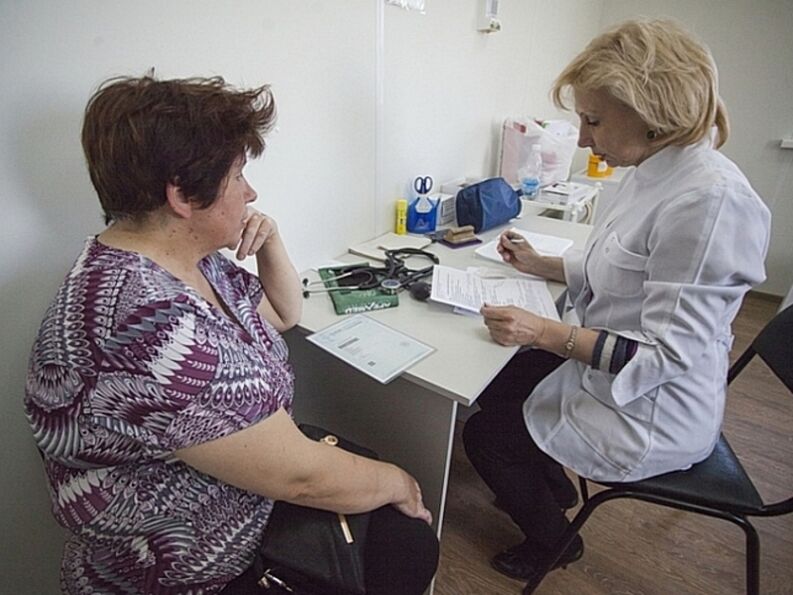
Osteoarthritis is commonly referred to as joint disease and destruction of cartilage tissue. This is due to the deterioration of blood circulation, cartilage metabolism, trauma. They lose elasticity, become brittle, deformed. Joint fluid is practically not produced, the joints stop slipping during movement and friction occurs between them. These factors cause a feeling of pain, inflammation begins.
Causes of osteoarthritis:
- Great stress on the joints. Osteoarthritis often occurs in athletes and people with heavy physical work. Being overweight also significantly increases the load.
- Poor diet. In order for the tissues and joints of cartilage to receive the required amount of calcium, potassium and other useful minerals and substances, a person must take them in sufficient quantities with food.
- Diseases such as scoliosis or flat feet also negatively affect the joints. Because the load is unevenly distributed due to a muscle defect, the joints suffer. In the joint where the load was higher, arthrosis begins to develop.
- Cartilage injuries do not go unnoticed. They disrupt metabolism, elasticity and lead to inflammation.
- Prolonged stress disrupts the metabolism of the whole body and joints. in particular, the muscles are tense. All this leads to arthritis.
- AgeThe closer you get to old age, the more your joints wear out.
- Diseases that are accompanied by inflammation in the body can lead to osteoarthritis. These include: tuberculosis, purulent arthritis, syphilis.
- Joint dysplasia caused by abnormal joint formation in the uterus.
Several of these traits, such as metabolism and certain diseases, are often classified as a separate group: hereditary causes.
Degree of development of arthrosis
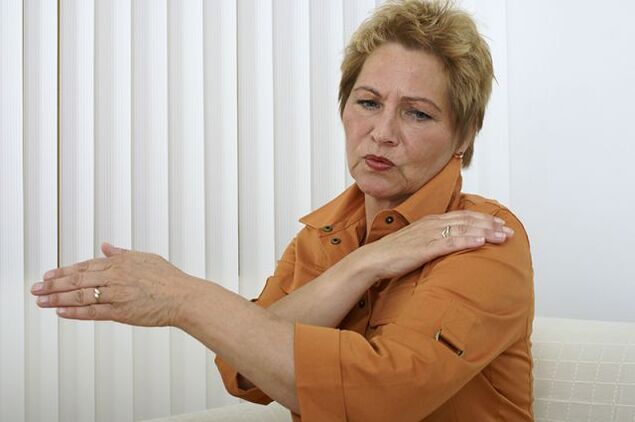
Osteoarthritis does not occur suddenly, without causes and symptoms. There are 3 phases in its development:
- Pain begins to appear after exercise, walking long distances. After rest, the pain disappears. At this stage, the cartilage begins to decompose, the synovial fluid is secreted in insufficient quantities. Muscles go through changes, weak.
- The pain is felt not only after exercise, but also at rest. Even a night's sleep does not bring significant relief. Bone growths begin to form on the joints. When the wrist moves, a squeak is heard. Swelling of the surrounding tissues is visible.
- The muscular apparatus is significantly weakened, synovial fluid is not released due to impaired metabolism, cartilage is deformed. Bone growths during movement cause unbearable pain. Swelling of the periarticular tissues is becoming more pronounced, and the temperature is high.
Unfortunately, many go to the doctor only when the arthrosis reaches 3 degrees. People do not pay attention or try to cure only the symptoms, but not the disease itself. Although the treatment will be much more effective and faster if you start it at the first sign of illness.
The main types of diseases
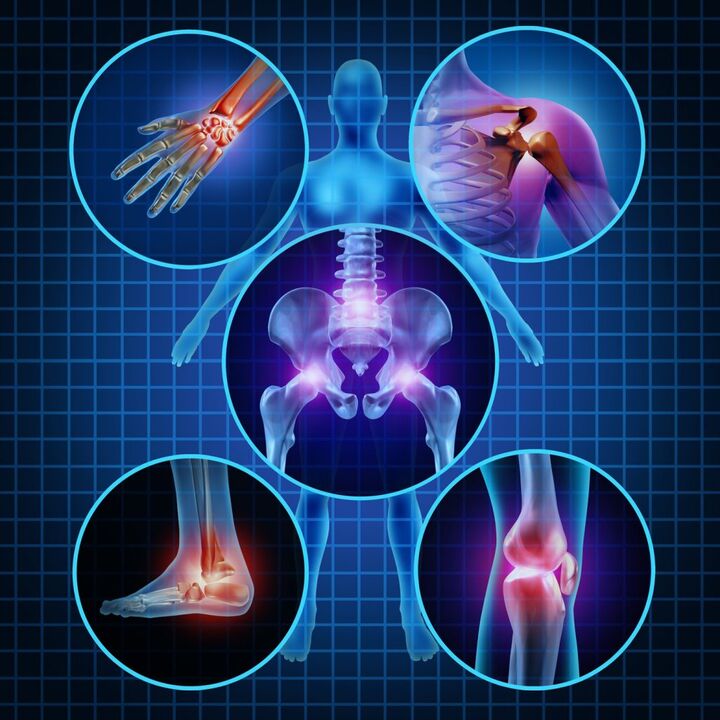
Depending on the area where the joint is affected, there are several types of osteoarthritis:
- Gonarthrosis is an inflammation of the joint tissue of the knee. It most commonly occurs in people with high body weight or with varicose veins. Injuries are also one of the main reasons.
- Ankle osteoarthritis - occurs most often due to injuries, sprains. Athletes and people who do physical work are very susceptible to this type of osteoarthritis. Overweight people also suffer from pathology.
- Coxarthrosis - thinning of the connective tissue of the hip joint. It is difficult to notice the onset of the disease. There are no obvious symptoms: no swelling, no lameness, only occasional pain. But despite the absence of external signs, there are serious internal changes. Muscles weaken, pain intensifies, lameness occurs. Most often, drug treatment is ineffective at this stage. The way out is joint prosthetics.
- Osteoarthritis of the shoulder joint occurs when it is worn out due to heavy loads, injuries, disorders of the endocrine system. It is characterized by severe pain in the shoulder, joint mobility becomes limited. One of the main methods of treatment is exercise therapy.
- Spondyloarthritis - arthrosis of the spine. It most often occurs in people with sedentary work and with a load on the back (for example, in mobile people). People with overweight and poor posture also suffer from spondyloarthritis, because their cartilage wears out prematurely, causing microtrauma and inflammation. Good ways to relieve pain are exercise therapy, swimming and acupuncture.
- Uncoarthrosis - destruction of the intervertebral discs of the cervical spine. It occurs due to congenital malformations, overweight, low physical activity, injuries. It is dangerous because it causes loss of some reflexes, leads to dizziness, fainting and high blood pressure. Treatment of this type of osteoarthritis should be complex: drugs, physiotherapy. In addition, in order to reduce the load on the cervical region, it is recommended to wear a special collar. It also contributes to light muscle stretching.
An arthrologist or rheumatologist should be contacted for diagnosis.
Which doctor is treating?
How to treat osteoarthritis, only a doctor will tell. But which doctor to go to for osteoarthritis depends on the degree to which the disease has reached.
- If a person has arthrosis of the 1st degree, the pain is just beginning, and there are no serious changes in the joint, then the treatment should be taken over by a rheumatologist. He will prescribe the necessary medications and procedures.
- When the pain becomes more intense and prolonged, changes in the internal tissues begin, arthrosis of the 2nd degree occurs, then you need to consult an orthopedist. He, in addition to medication, can prescribe the implementation of complex physiotherapy and massage course.
- Then, when the arthrosis has started and has already reached the 3rd degree, only a surgeon can help. Otherwise, the patient is at risk of disability. Restoring destroyed cartilage and joints is sometimes only possible by resorting to surgery.
In case arthrosis occurs after a joint injury, then you need to consult a traumatologist. Depending on the injury, the traumatologist may refer the patient to other profiling specialists.
Prevention

To avoid osteoarthritis, you need to take the following measures:
- follow your diet, make it as useful as possible;
- prevent the formation of excess body weight;
- properly distribute the load on the joints, do not overload them;
- after physical activity it is necessary to do a massage to avoid circulatory disorders.
Such prevention of arthrosis will help to avoid not only diseases of the musculoskeletal system, but also other systems and organs.
Treatment of osteoarthritis
Every person who has been diagnosed with this first of all wants to get an answer to the question of whether it is possible to cure osteoarthritis? Treatment of osteoarthritis is always a whole range of medications, procedures, exercises, folk methods and a huge amount of time. Unfortunately, osteoarthritis cannot be cured in a two-week course of medication. Even if the pain subsides and some signs of osteoarthritis begin to disappear, it will not mean the beginning of complete recovery.
Bitan! Treatment can last from six months or longer. Therefore, one should be patient and strictly adhere to all doctor's prescriptions.
Medical therapy
Treatment of osteoarthritis with drugs takes place in stages. Each phase is aimed at solving a specific problem:
- Relieve pain and inflammation. Before starting treatment directly on the wrist and cartilage, it is necessary to get rid of the pain and eliminate the inflammation. This is achieved through the use of nonsteroidal anti-inflammatory drugs.
- Regeneration of cartilage tissue with the help of chondroprotective preparations containing chondroitin.
- Regeneration of the joint by injection into the area of the diseased joint. Corticosteroids may also be prescribed. They alleviate inflammation (if tablets and ointments have not been used) and restore the mobility of the affected joint.
- Filling the joint cavity with hyaluronic acid. It promotes the production of new fluid and prevents friction from one joint to another.
Unfortunately, it is impossible to completely restore the joint, even after going through the entire above course of treatment. Additional procedures and methods are needed.
Therapeutic and physical complex, gymnastics and massage for osteoarthritis
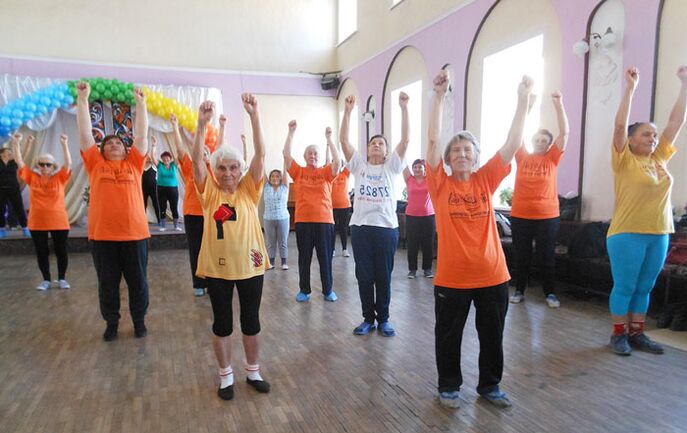
Exercise therapy is an integral part of osteoarthritis treatment. The instructor, based on the diagnosis and recommendations of the attending physician, compiles an individual training program. Since there are several types of osteoarthritis, the exercises will be focused on different muscle groups, on the development of different joints and ligaments. The age of the person suffering from arthrosis, the presence of overweight and other factors must be taken into account when compiling a set of exercises.
For example, for the development of muscles and ligaments of the shoulder girdle, there is an effective set of Pop exercises. It is based on the repetition of smooth movements, with a slow increase in amplitude.
Exercise can be approached only after the removal of pain and inflammation.
Bitan! During the worsening of the disease, exercise therapy, gymnastics and massage are contraindicated!
Gymnastics should be performed at home several times a day. It is better to warm it up a bit before each load on the painful joint, making light movements up and down, to the side, turning in a circle.
It is also recommended to start a massage course after relieving pain and inflammation. All movements should be light, caressing, without unnecessary effort and pressure.
Folk methods of treatment
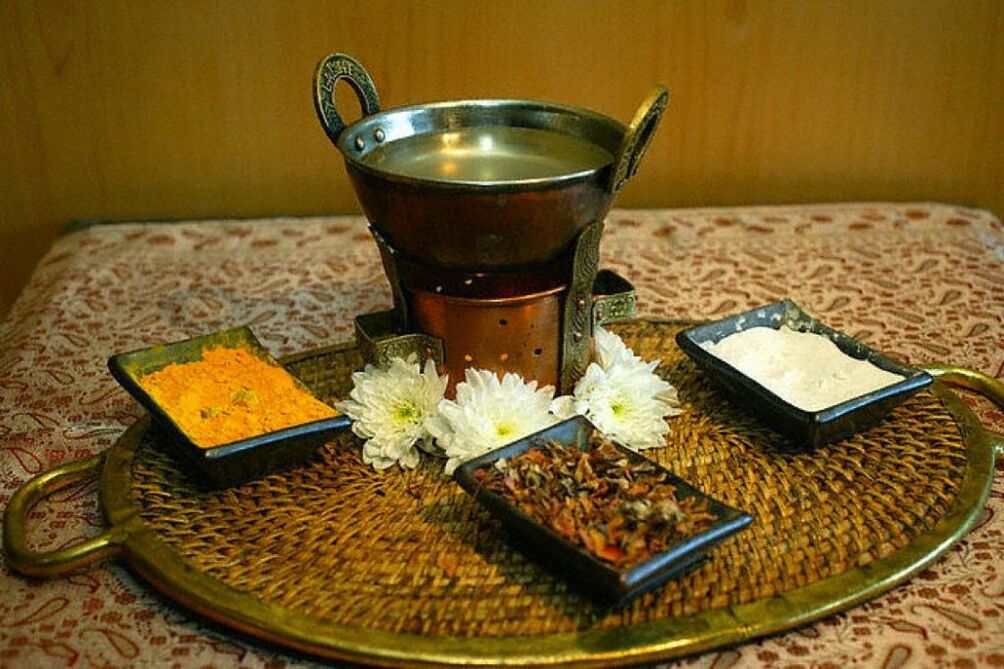
Alternative methods are not a cure for osteoarthritis, one cannot hope for a cure using only traditional medicine. They are an excellent addition to conservative treatment, but they are not an independent species.
The most effective folk remedies for osteoarthritis are compresses and rubbing. The following coatings proved to be the best:
- Cabbage juice compress or cabbage leaf smeared with honey.
- Compress from horseradish root, chopped on a grater.
- A compress of cooked oatmeal.
- Compress of fresh mashed potatoes.
Among the rubs as the most effective are:
- Rubbing with honey, vinegar (or alcohol), iodine and glycerin. Improves blood circulation, relieves pain.
- Rubbing raw chicken eggs, turpentine and ammonia. Apply 3-4 days before bedtime, no more.
- Rubbing propolis and vegetable oil (sunflower, olive).
- Alcoholic infusion of elecampane root.
In arthrosis, some decoctions and tinctures are used orally. They help to improve the metabolism and supply the necessary substances to the body of a person suffering from osteoarthritis. Particularly popular are:
- bay leaf decoction;
- a mixture of garlic and olive (corn) oil;
- a mixture of calcined cottage cheese (homemade), honey and horseradish root.
Bathing with hay dust has a positive effect on sore joints. It is also helpful to perform exercises to develop muscles and ligaments.
Bitan! Before starting treatment with herbs, you must be sure that there are no allergic reactions to the components of decoctions, tinctures and compresses.
Stem cell treatment
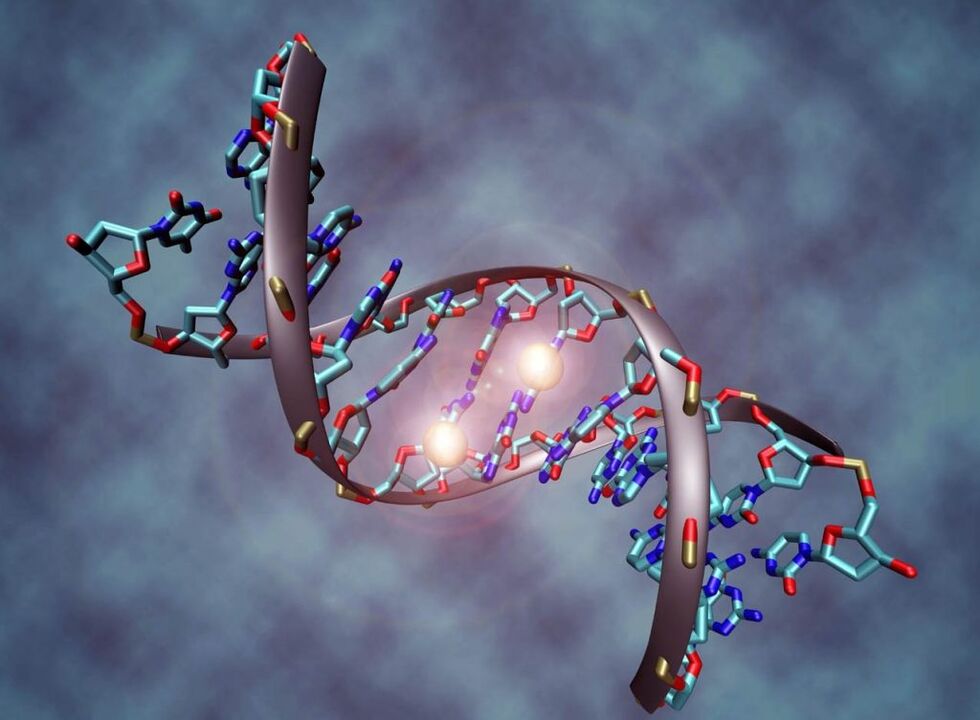
The human body contains stem cells. The unique ability of these cells is that they can be transformed into any cell in the body. This property was taken as the basis for the development of a method for the treatment of arthrosis of the joints with stem cells. The method consists in isolating a certain amount of stem cells from human bone marrow. Then they are grown under special conditions for 2 months, sometimes less. They are then introduced into the cavity of the diseased joint.
Stem cells improve metabolism and blood circulation in the affected area, relieve inflammation and pain. Thanks to them, cartilage and joint tissue are restored. After a few months, a second injection of stem cells into the joint area will be needed. After 6 months after this procedure, we can speak with accuracy about the achieved effect, although the improvements are visible in the first days after the introduction of cells.
Surgical treatment
The operative method of treating arthrosis of the joints is resorted to when conservative methods do not give the expected results: the inflammation is not removed, the pain does not stop. The essence of these is in the introduction of the necessary tools in the area of the affected joint and manipulation, which helps to restore all tissues and their functions. Sometimes that is not enough for a complete recovery. Then a method such as joint replacement is used. In this case, special metal or plastic plates are installed in place of the cartilage.
Disability due to arthritis
Often, with this disease, a person is tormented by such severe pain that he is willing to demand a diagnosis of disability. After all, these pains do not allow him to perform chores and home functions qualitatively and to the appropriate extent. But doctors are not in a hurry with a statement of disability, because with proper treatment and accurate application of all recommendations, the pain stops, inflammation is reduced, and motor activity is restored. If the diagnosis is "1st degree arthrosis" or "2nd degree arthrosis", then it is almost impossible to get a category.
Bitan! Disability is allowed only for irreversible deformity changes in the joints.
However, with advanced osteoarthritis, if it is impossible to eliminate even the symptoms of the disease, there is hope that you will get a disability. But it will be temporary. You will need to undergo regular medical and social check-ups. If the patient has undergone endoprosthetic surgery, and his motor functions are completely restored, the disability will be removed.



















